 |
2006 Articles |
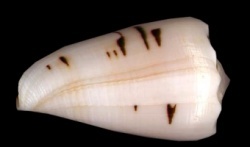 |
|
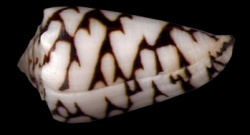 |
|
|
Touitou
David & Rolland Serge
|
|||
|
|
Last
update : March 01th 2005
|
| This
is a rather small complex compared to other ones like Conus magnificus-episcopatus.
But many of us get sometimes confused in front of some strange specimens.
Even if I do not buy shells, I usually watch the shell dealers' websites
to see what they offer to collectors and to dream on many beautiful specimens.
Many times the data associated to the shell is not correct and especially
with Conus marmoreus New Caledonian variations. That's why I hope
that after reading this short article, you will have no more problem to
identify any variation of this species. Conus marmoreus is night and day mollusc hunter. It feeds on many gasteropods including Cone Shells. This shallow water species lives in grass fields or coral fragments areas. Big specimens can be found in sand pockets (even small ones among live corals) on the reef. |
|
Here are some pictures
from a live
Conus marmoreus (in M. Rolland
Aquarium)
 |
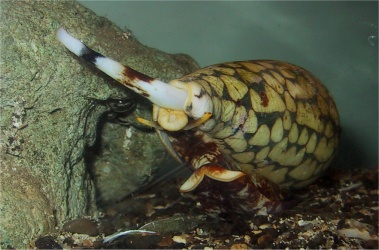 |
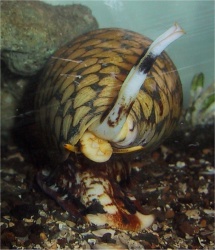 |
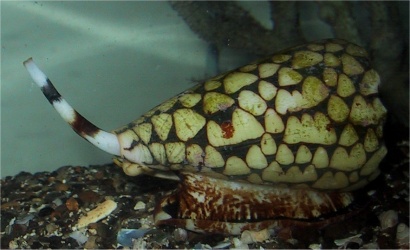 |
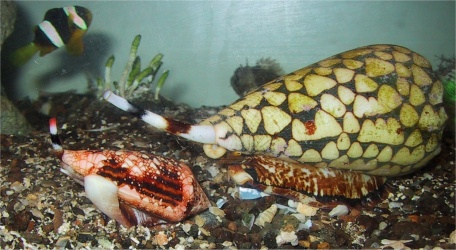 |
A. ICONOGRAPHY OF
THE DIFFERENTS
VARIATIONS FROM NEW CALEDONIA
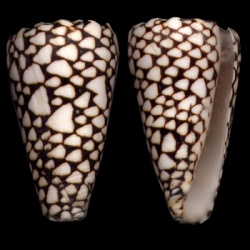 |
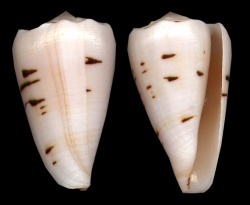 |
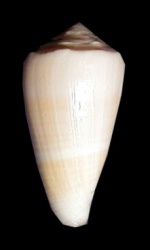 |
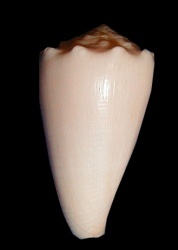 |
|
Conus
marmoreus
"classic specimens" Linné, 1758 |
Conus
marmoreus
"bastard" Linné, 1758 |
Conus
marmoreus
f. suffusus Sowerby III, 1870 |
Conus
marmoreus
f. suffusus var. noumeensis Crosse, 1872 |
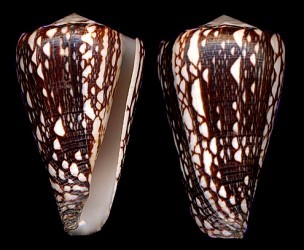 |
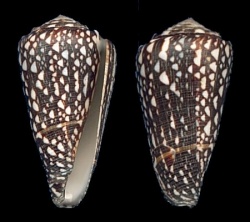 |
 |
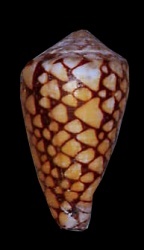 |
|
Conus
marmoreus
f. crosseanus Bernardi, 1861 |
Conus
marmoreus
f. crosseanus var. lineata Crosse, 1878 |
Conus
marmoreus
"orange variation" Linné, 1758 |
Conus
marmoreus
f. pseudomarmoreus Crosse, 187? |
B. DETAILED INFORMATIONS
ABOUT THE
DIFFERENT VARIATIONS FROM NEW CALEDONIA
| Conus marmoreus Linné, 1758 "classic specimens" |
 Ccollected in the North |
This
is a classic species from the Pacific Ocean.
Like many other cone shells species, it may vary a lot. The pattern is black and has a lot of white triangles that usually are separated from each other by the black color of the pattern. The triangles, unlike in the Conus magnificus-episcopatus complex, are very similar between themselves by their shape and their size. They are rarely confluent. They may sometimes, like many other species, have partially unusual pattern and triangle colors like the blue color (like Conus canonicus). In the south we can find some "hybrids" between the usual variation and the crosseanus one. |
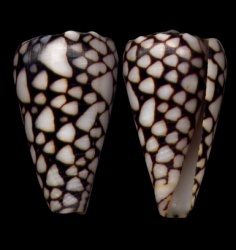 Collected in the North-West |
| Conus marmoreus Linné, 1758 "bastard" |
 |
This
variation is endemic to the Bourail Region. The shells are smaller there
now. They used to have normal size in the past but they are too often
collected and cannot reach big sizes anymore...
These are "hybrids" between usual Conus marmoreus and Conus marmoreus f. suffusus. Some have just huge confluent white triangles an some have just few black marks on their pattern. Those are really beautiful specimens. |
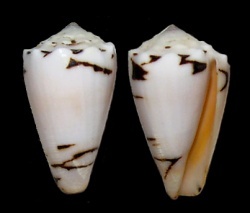 |
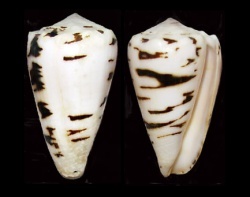 |
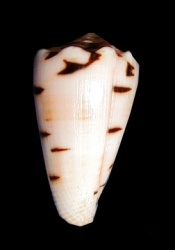 |
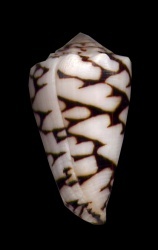
|
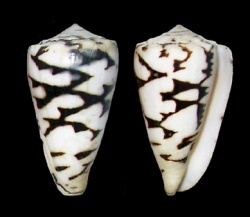 |
| Conus marmoreus f. suffusus Sowerby III, 1870 |
|
|
||
 |
This
variation is endemic to the Bourail Region. The shells are smaller there,
like the "bastards" ones. They are made of pure white color
with pink or light yellow tint. Black spots, dots or lines are not present
anymore.
|
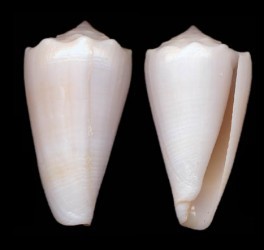 |
| Conus marmoreus f. suffusus var. noumeensis Crosse, 1872 |
|
|
||
 |
This
form concern white spcimens wich were found in the south of the island.
In fact they are just albinistic specimens of Conus marmoreus
species.
Their size is then bigger than the Conus marmoreus f. suffusus speciemns from Bourail as they are related to the classic Conus marmoreus. |
| Conus marmoreus f. crosseanus Bernardi, 1861 |
|
|
||
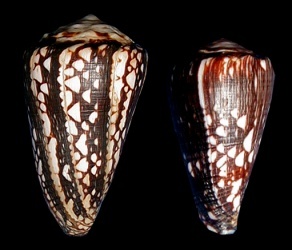 |
This
variation is endemic from Pine Island.
The dark pattern has many axial dark lines, the white triangles are less visible and less numerous. It makes really dark specimens wich contrast a lot with Conus marmoreus f. suffusus. A yellow to blue tint can exist on some specimens though. The size correspond to usual Conus marmoreus species. |
 |
| Conus marmoreus f. crosseanus var. lineata Crosse, 1878 |
|
|
||
 |
This
variation is endemic from Pine Island. It differs from the Conus
marmoreus f. crosseanus by the presence of one to several
spiral line crossing the pattern of the shell. They can be large of
very thin.
The spiral lines can be colored with white, light blue, light yellow or light yellow-orange. When several lines are present on a specimen, they may have different color. |
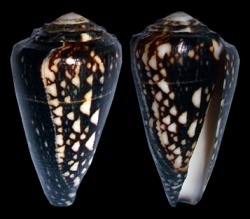 |
| Conus marmoreus "orange variation" Linné, 1758 |
|
|
||
 |
This
variation is endemic from Pine Island. This variation differs a lot
from Conus marmoreus by it's pattern color wich is orange instead
of black. It is a very nice variation wich is very rare though.
|
| Conus marmoreus f. pseudomarmoreus Crosse, 187? |
|
|
||
 |
This
variation refers to uncrowned specimens.
Nothing really incredible. Just some anormal specimens of Conus marmoreus with smooth spire instead of the usual crowned one. |
| Conus marmoreus Linné, 1758 strange specimen |
|
|
||
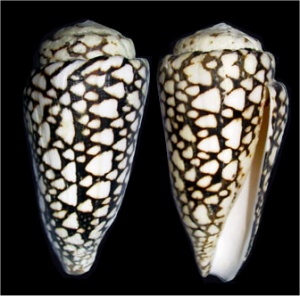 |
|
 |
2006 Articles |
